The strategic location of the British Indian Ocean Territory makes it into the perfect facility for long range operations.
The tiny islands were charted by the famous Portuguese explorer Vasco da Gama, the first European to reach India by sea, in the early sixteenth century. However, the archipelago was only claimed two centuries later by France as a possession of the French territory of Mauritius and settled in the 1790s. Soon France established a coconut plantation using slave labour. During the Napoleonic Wars, Mauritius was captured by Britain, and with the first defeat of Napoleon in 1814, the colony was amongst those ceded to the British in the Treaty of Paris of 1814.
Hereafter, the Chagos Archipelago would be part of the British Colony of Mauritius until the British Government detached the archipelago and the islands of Desroches, Farquhar and Aldabra from Seychelles in 1965 for their inclusion in the newly formed British Indian Ocean Territory (BIOT). The main objective was to allow the construction of a new complex of military facilities for the benefit of the UK and the United States. On June 1976, the three islands mentioned above once part of Seychelles were returned to the colony as it was on the verge of being granted independence. As a result, the six main islands groups of the Chagos Archipelago constitute the BIOT.
The Chagos is an archipelago composed of more than 50 islands totalling a land area of 60 km² or 23 square miles. The largest and most relevant island is Diego Garcia, accounting for almost half of the territory’s total land area and being home of its only airport and inhabitants. Historically, its geostrategic location in the Indian Ocean, south of India and halfway between Africa and Indonesia, enabled the tiny Diego Garcia to play a significant role for Britain’s interests in the area and beyond.
During the second half of the nineteenth century, when the British Empire established a global network of coaling stations to supply its fleet, Diego Garcia briefly based two coaling stations for the Royal Navy’s steamships crossing the Indian Ocean. In the 1880s the island witnessed an increasing movement of trading and warships, symbols of Britain’s imperial century.
In 1914, during the first weeks of the First World War, the German light cruiser SMS Emden visited Diego Garcia after several raids throughout the region. The British garrison at the islands had not yet received the information about the state of war between Britain and Germany and thus treated the Germans to a warm reception. After a fortnight the light cruiser left Diego Garcia to continue its attacks against vessels and coastal towns of the Entente. The Emden would face her final battle one month later when she encountered the Australian cruiser HMAS Sydney.
Diego Garcia was used more intensely by Britain during the Second World War. In 1942, Britain opened an air base named RAF Station Diego Garcia and created an advanced flying boat unit. It was home of squadrons No 205 and 240, originally stationed on Ceylon. Aircraft such as the British flying boat patrol bomber ‘Sunderland’ and the American flying boat and amphibious aircraft ‘Catalina’ were flown during the war in search of German and Japanese surface raider and submarines. The island also received a Royal Marines detachment to protect the Royal Navy base and Royal Air Force station from Japanese attacks. Following the end of the war, the British station was closed in April 1946.
In the 1960s, while Britain was planning its military withdrawal from the Indian Ocean, the British Government allowed the United States to establish a naval communication station on one of the British territories in the region. The main island of the Chagos Archipelago soon emerged as a suitable location. In November 1965, envisaging the creation of one new administrative territory, the British Government purchased the Archipelago from the self-governing colony of Mauritius. However, since the 1980s Mauritius has contested the British control of the Chagos Archipelago. Recently, in 2017, the United Nations General Assembly voted in favour of referring the dispute between Britain and Mauritius to the International Court of Justice in order to clarify the status of the archipelago.
On 30 December 1966, Britain and the United States established an agreement which enables the Americans to use the newly formed British Indian Ocean Territory for defence purposes for 50 years – until December 2016 – followed by a 20-year extension as long as neither party declares its intention of terminating the agreement. The United States made no direct payment to the UK as part of the 1966 agreement or its subsequent amendments. Nevertheless, Britain received a discount from the American Government on the acquisition of the submarine-launched ballistic missile system (SLBM), the Polaris missiles.
For the United States, the main island, Diego Garcia, was the ideal territory for setting up a foreign military base. Firstly, it was owned and administered by Britain its closest ally. Secondly, the island was distant from any potential threats. Thirdly, it was a place not sought by other nations as it had no economic interest. Lastly and most controversial, it had a small population. Its inhabitants were Europeans who managed the coconut plantations and contract workers of Indian, African and Malay ancestry, known as Chagossians, who had worked and lived on the plantations for several generations. The Chagossians would be removed from Diego Garcia so the base could be constructed. Between 1967 and 1973, the inhabitants were relocated primarily to Mauritius and Seychelles.
The relatively small Naval Communications Station (NAVCOMMSTA) was completed in early 1973. However, the size and scope of the Anglo-American base would face a significant enlargement due to geopolitical changes. In the early 1970s, the military capabilities of the United States in the region was going through several new setbacks including the victory of the Khmer Rouge in Cambodia, the Fall of Saigon, the closure of the listening posts of Peshawar Air Station in Pakistan and Kagnew Station in Eritrea, the Mayaguez incident, the growing Soviet naval presence in Aden and a new Soviet airbase in Somalia. These setbacks caused the American Government to request Britain permission to expand the facilities in Diego Garcia. Receiving Britain’s approval, the United States Naval Construction Battalions (‘Seebees’ or C.B.) initiated the enlargement of the airfield and construction of a fleet anchorage.
Subsequently to the fall of the Shah of Iran and the Iran Hostage Crisis in 1979-1980, the United States and the UK became more concerned with the security of the oil flow from the Persian Gulf through the Strait of Hormuz. Thus, once more, the United States asked Britain for permission to expand the military complex on Diego Garcia. The new plans for the base involved the construction of two parallel 3,700 m (12,000 foot-long) runways, larger parking aprons – the area where aircraft are parked, refuelled, loaded or boarded – for heavy bombers, twenty new anchorages, a deep-water pier, new port facilities for the largest ships in the American or British navies, aircraft hangars, an air terminal, maintenance buildings, a fuel storage area and living quarters and messing facilities for thousands of personnel. Thereby, the 1970s witnessed the BIOT be transformed into a world-class military base for joint UK-US operations.
Following the end of the Cold War, Diego Garcia continued to be an important military base. The territory played a key role in the Gulf War, the 2003 invasion of Iraq and the War in Afghanistan as the United States Armed Forces extensively used the facilities during its operations in the Gulf War of 1991, Afghanistan and Iraq. During the War in Afghanistan and Iraq other allied militaries were based on the island including Australian, South Korean and Japanese forces.
Moreover, Diego Garcia host one of four ‘dedicated ground antennas’, the others are on the British island of Ascension, Kwajalein – part of the Marshall Islands – and at Cape Canaveral, Florida, that assists in the operation of the famous navigation system, the Global Positioning System (GPS). The USAF also manages a telescope array on the Island as part of the ‘Ground-Based Electro-Optical Deep Space Surveillance System’ (GEODSS) for tracking debris and lists Diego Garcia as one of the 33 emergency landing sites worldwide for the NASA Space Shuttle programme.
Beyond that, the territory is seen as an ‘unsinkable aircraft carrier’ and regarded as the ‘Malta of the Indian Ocean’ by the American Government aiding to explain the reasons behind the continued military presence on the islands and its position as one of the most relevant military bases in the Asia-Pacific region for the United States and Britain. It is worth mentioning that neither the United States nor Britain recognises Diego Garcia – or the BIOT as a whole – as being subject to the African Nuclear-Weapons-Free Zone Treaty, which lists the BIOT as covered by the treaty.
Currently, the United States military complex on Diego Garcia is formally known as Naval Support Facility Diego Garcia or ‘Camp Thunder Cove’. The UK’s term for the facilities is Permanent Join Operating Base (PJOB) Diego Garcia, and the British personnel is officially represented by the ‘British Forces British Indian Ocean Territories’ (BFBIOT). As Britain has full and continual access to the facilities and is responsible for the administration of the territory, the BFBIOT has approximately 40-50 British military personnel permanently posted on Diego Garcia, most from the Naval Party 1002, having as their primary duty to carry out the bureaucratic administration of the British Indian Ocean Territory. The American presence accounts for roughly 2,500 military personnel. However, due to the extensive usage of Diego Garcia by the United States, the numbers usually go beyond 5,000 military personnel; these numbers do not consider civilian contract workers.
Therefore, the long history of the BIOT shows its importance to Britain since the nineteenth century and to the United States since the early years of the Cold War. In spite of the controversies involving the Chagossians, the geostrategic position puts the tiny islands amongst Britain’s most relevant Overseas Territories. Alongside Gibraltar, the Sovereign Bases of Akrotiri and Dhekelia, Ascension Island and the Falkland Islands, the British Indian Ocean Territory plays a central role in the expeditionary capabilities and overseas interests of Britain and her allies.
Diego Garcia is one of the last British footholds ‘East of Suez’ and the last British possession in the Indian Ocean. While Britain prepares herself for a more ‘global’ role and desires to be an indispensable ally for the Americans, the relevance of the BIOT and other British Overseas Territories shall not be disregarded by any present or future British Government.


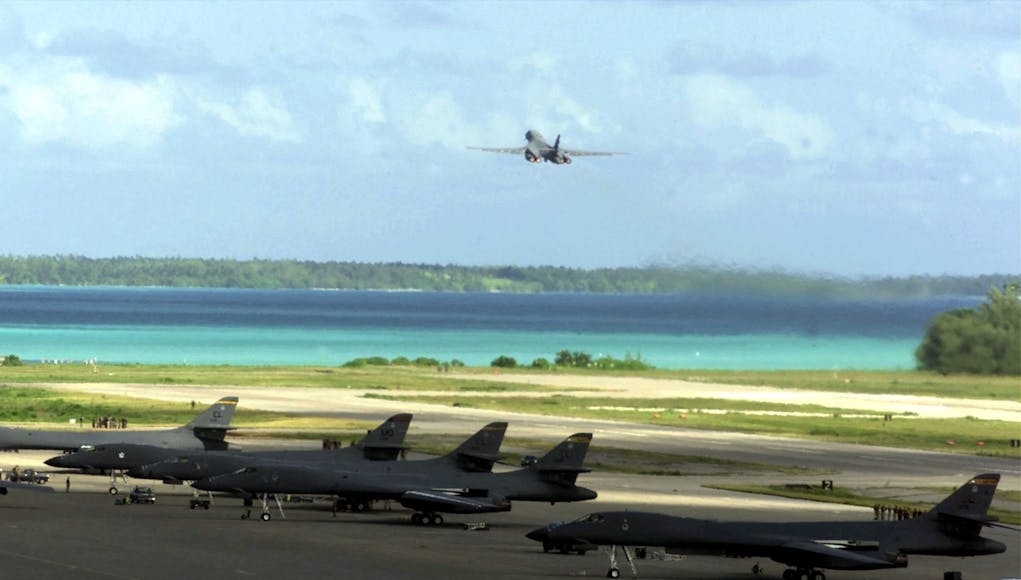
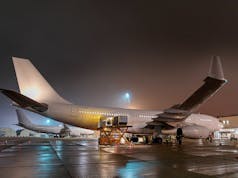

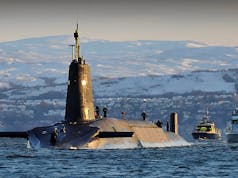
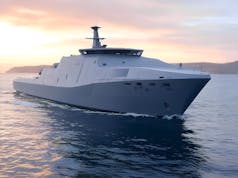
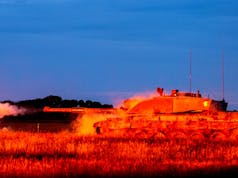

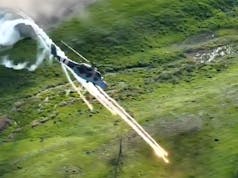


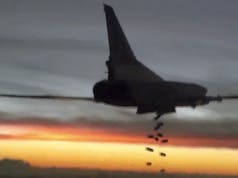

Imagine if that was a FAA B1-B taking off………
“The British Indian Ocean Territory – An unsinkable aircraft carrier in the form of Diego Garcia”
With rising sea levels isn’t this “unsinkable aircraft carrier” actually sinking, albeit very slowly!
Um. Unsinkable submarine then………! 😉
In about a thousand years,probably,maybe,could be.
What are the sea bed extractable like in that area ? That’s quite a big EEZ we have ( fifth largest in world not including the BAT ) The size of our EEZ will be one of our most valuable resources going forward ( especially as we develope deep sea mineral and rare element extraction methods).
We really need to be robust in telling the rest of the world that ours is ours.
You don’t tell the world, you show it. It is the only way some ‘others’ understand.
Nope we will feel ashamed about our terrible ermm past then give everything away………… With compensation just because.
Uncanny how prophetic this comment was…03oct24 UK gives it away and gives compensation package to Mauritius.
(Chris H) So the us has key GPS antennae there does it? Well sorry Galileo you can’t have Diego Garcia as we will have ours there alongside the GPS ones …. And if Trump the Chump gets even dumber ..
Please excuse my Schadenfreude …..
Sometimes there is a bit of Anti-American sentiment voiced in the comments of this website. We level headed Americans (There are more of us than the media would like to acknowledge) know that the UK & USA alliance has a tremendous gift with the ability to speak the same language, first widely noted by Churchill, which is an often overlooked but critical aspect of being able to communicate and work together.
As we say on this side of the Atlantic – Haters are going to hate. But it seems misplaced to hate Trump and the USA when there are so many candidates who pose much greater threats to the UK and its sovereignty. If you’re gonna hate, hate someone who would do you harm, not an ally. Food for thought. Thanks.
Trump is doing pretty well in reality tbh.
Do you class doing pretty well as in, he has not been assassinated yet? Because if so then I would agree with you. If not then I would strongly disagree.
LOL
Extraordinary rendition black site too.
USMC prepositioning site too I believe?
And how many of those Golf ball radomes on the island are Sigint sites for UKUSA? Good for monitoring Chinese activity in the Indian Ocean.
Considering the planes in the picture are all long range bombers and we have none, it would be interesting to know what countries would be in range of a typhoon allowing for air-to-air refueling.
It is a shame that there was no plans to replace the V fleet, even a slow moving but extremely long range heavy bomber could have some benefits in the modern world.
I always wish somebody by now would have got the UK back into the long-rage strategic bomber business. The job was basically done with Concorde if a Buccaneer-style bomb-bay could be fitted. At least bolt the engines and fantastic intakes on to something new and get a long-range Mach-2 super-cruise capability. This was one of Concorde’s greatest technical achievements.
As the vogue seems to be for naming RAF aircraft with their WWII predecessors’ names (e.g Tempest which was a fantastic aircraft at the end WWII), then why not do the job properly and call it “Lancaster.” – Crikey!
I was in Duxford the other day and went inside the concord and its safe to say it is now extremely dated. I am pretty sure a concorde 2 could be created from the work done with the original and result in a far safer and economical plane. However the key problems still exist, firstly anglo/french distrust and wanting all the work share and so everything having to be a compromise and more importantly that it was not american and so the US would do everything in their power again to kill the project, like they did with the original.
Absolutely agree Steve, and would this have to be a solo effort. Keep the French, Germans, Americans well away from it. I’m a big believer in some form of “Commonwealth” industrial link-up across the board. politics aside, I would even go as far as setting up some form of National manufacturing capability (not use BAES) for strategic defence stuff. Just keep costs down by not re-inventing the wheel by say using the intake/engine design (upgraded) and come up with a moderately stealthy super-long range bomber with a “Grand Slam” or stand-off payload. Plus a bit of space/power generation for a directed energy weapon and for self-defence and counter measures.
A few of those like that coming at you at Mach 2 and say 80k ft plus would put the bejesus up even the maddest of dictators.
P.S. and unlike the old V-force, give all the poor crews some realistic form of escape if it all goes t-ts up.
In the 50’s our country did look at the type of aircraft that would be required to replace the V-bombers. These promising aircraft such as the Avro 730, Hadley Page HP100 and Vicker SP4 were all designed for high altitude and an over target dash speed of Mach 3. Unfortunately the 1957 Sandy’s white paper cancelled these plus some other promising designs. The Avro 730 in particular requires further attention as it bares a remarkable similarity to the present Skylon project.
There was another US high speed bomber project cancelled and that was the XB70 Valkarie. This aircraft was designed to cruise supersonically and also dash over the target at Mach 3 thereby giving little time for response by the defenders. It was designed to use compression lift to augment lift at supersonic speed with increasing drag. It did this in two ways by creating a strong supersonic shock wave developed by the intakes of the engines and thus creating positive lift. It could also move its wingtips down by 65 degrees which contained the shock wave. It also reduced the wing area outside the shock wave created by the nose which significantly reduced wave drag boosting speed. It was quickly discovered that the aircraft in this configuration could maintain Mach 3+, but more importantly became more efficient the faster it went.
Imagine what a military Skylon would be capable of, this is an exoatmospheric vehicle and is designed to cruise above Mach 5. Now where’s the funding and the peoople who could make it happen?
In my reply to Steve I was suggesting more of a belt-and-braces first step. Mach 3 is a big ask compared to Mach 2. The Valkyrie(?) had its issues at Mach 3 (surface paint etc.).
Super long-range with decent payload at Mach 2 with some proven tech could be the initial way to go, then move onto something based on the Skylon/Reaction Engine stuff. Aren’t Reaction Engines now under the Boeing corporate dollar? Hoped they could remain British.
My fear is, like with the TSR2 or Canadian Avro Arrow, there would be dodgy goings on by the Americans to kill the project or take over the technology.
Funding by a UK/Commonwealth Sovereign Wealth Fund >> National Strategic defence capability organisation…call it Royal Armament Works (RAW) if you like…just dreaming …strategically.
As far as I know Boeing have only invested in the SABRE engines development, nothing about buying out the company. Rolls Royce and BAE have also invested heavily in the company and I’m sure would fight to be at the front of the queue if the company was up for sale. If it did come to a buy out I wonder if HMG will slap a secret label on it like they did previously with the RB545 swallow engine? I think Boeing are hedging their bets with investing in both the SABRE and pulse engines for future hypersonic aircraft.
With today’s material technology it is easier to attain Mach 3+ than before. The aircraft could use an evolution of a proven design to speed up development and introduction. The Concorde’s wing would require tweeking as it was designed for Mach 2 cruising and not Mach 3+. At faster speeds the shock wave cone angle gets tighter, hence why the Hotol’s wings were so small due to the speeds it would attain. This is one of the reasons why I think the folding wing tips idea should be revisited on a cranked delta platform rather than the trapizoidal wing. As not only could you use compression lift to enhance supersonic aerodynamic efficiency, but also at slower speeds allow for more wing area providing lift. The aircraft would have to operate at altitude (16000m+) to maintain these hypersonic speeds. This is because of the air density at lower altitudes which not only increases the heat stress on the airframe but also burns more fuel due to the increase in drag.
There is a gap in the market for a high speed bomber. The US are looking at the B21 to replace the B1 and B52 and eventually the B1. But it is a slow (sub-sonic) stealth aircraft. The only other aircraft that can carry a significant payload is the F15E which is fast but highly detectable by radar. The F22 and F35 are more of a tactical precision strike aircraft and have a limited payload. So perhaps there is a requirement for a largish aircraft that can do Mach 3+ over 5000 miles with a significant payload.
There were plans to replace the V force with high speed high altitude bombers, but these got cancelled as part of the Sandy’s White paper. One of the aircraft was the Avro 730 which looked like the forerunner to Hotol. In some respects it’s a shame that further investigations into compression lift stopped after the cancellation of the XB70 Valkyrie. This used a supersonic shockwave generated by the engine intake to provide additional lift at high speeds. Additionally the wing tips would bend downwards by 65 degrees to contain the shockwave. This allowed the aircraft to “cruise” at Mach 3 as it was found that it became more efficient the faster it went.
So today if you combined a Hotal style airframe with the Sabre engine perhaps using compression lift Mach 5+ is easily achievable. Add to the range and height such an aircraft could achieve when operating in both air breathing and rocket mode would make it very capable as a bomber or reconnaissance asset. Per ardua ad astra – through adversity to the stars!
Poseidon with Harpoon Block II based on Diego Garcia can control a large area of ocean.
Breaking news! Nobody gives a single solitary damn about the UN or The Hague except the UN and The Hague and a few socialist college professors. Backed by African countries? You mean a pack of miserable dictators, kleptocrats, and despots propped up by foreign aid and civil war. They can mind their own damn buisness or enjoy famine as their foreign aid is cutoff.
Another way of looking at it why do we have land so far away from our shores. Places like the Falklands and gibralta are different, as the people there want to be semi British and whilst they want to stay that way they should have rights to do so, they have lived there for hundred odd years. A unoccupied island is another question. I don’t see the problems with going through the UN process and following the outcome. We live in the 21st century not the 19th and the empire.
My problem with all this is I think isreali should give up its illegally occupied lands and we can’t have the moral high ground unless we are go through this process.
Err sorry Steve – please read the history of wars in 1948 and 1967. The Arab side refused to accept the 1948 UN Declaration that the original land called Canaan could be divided into both Arab and Jewish homelands. The media in Arab capitals urged the Jews be pushed into the sea. From that time until 1967 Syrian guns on the Golan Heights bombarded Israelis settlements in the Galilee. In 1967 after Israel was blockaded in the Gulf of Aqaba it retaliated against Egypt and Syria and warned Jordan not to attack – but Jordan did attack and was repulsed.
Now let’s consider the UN sanctioned outcome of WW2 – Germany attacked Poland and then the Soviet Union attacked Poland 2 weeks later. At the end of the war Germany gave up its eastern lands to Poland and Poland had to give up its Esaten lands to the Soviet Union even though the latter had first attacked it. On that basis Israel has NO CASE TO ANSWER,
What? What has any of that got anything to do with Israeli illegally establishing settlements in Palestine? Arab is not a single country and neither is Egypt/Stria/Jordan the same country as Palestine.
The UK created those borders, and frankly did a terrible rushed job of it, but the border exist and were internationally agreed.
I’m not naive enough to think that Israeli pulling back to their own legal border would solve the problems, but it would be a big step in the right direction.
Germany gave up its illegally occupation lands to Poland, after there was a treaty giving it up, there is no such treaty giving Israeli parts of Palestine and so by definition it is illegally held
Ultimately sins of the past should not justify actions of today.
Steve. What sins of the past had you in mind relating to the BIOT?
Just do like the Russians, Chinese, even French do. Ignore UN resolutions.
“Advisory opinion” is the key. It is not a mandatory finding so it will be ignored if it goes against UK interests.
Yawn.
The question is whether the US would actually let us use the island, if we needed, it but the conflict was not in the US interests (for example early days of the falklands when the US was actively working against us) or Suez. Is it really a British unsinkable aircraft carrier or a US one?
It’s our island Steve, we let the US use it. Them not letting us use our own island while keeping a military presence that was not invited ( as we would deinvite them in that scenario) would sort of constitute an act of war, so that won’t happen unless someone completely looses the plot. As the island is so import to the US you will also not see the” U.K. are a bunch of imperialists who need to be put back in their box” dialogue that sometimes overtake some of the cousins in situations like this.
If I read correctly we ahve leased the island to the US on a 30 year loan, so no it’s not currently ours to use
As far as I know the lease explicitly states that the UK can use the island and bases if required without the permission of the US.
Steve I am wondering what makes you think we should let go the islands; and if so why and to whom do we surrender them. You should consider the vital role they played in offering a refuge to the UK Indian ocean Fleet in WW2.
In response to some comment on a UK “bomber” development above, my suggestion would be for the powers that be to dust of the Vulcan Bomber design, rework it so that is semi-stealthy by removing the large vertical tail, install a modified fly by wire or (light using optic fiber like Japanese P1) system, cockpit displays and avionics from the Typhoon, have a bomb bay capacity of the Victor, power it with 4 uprated Eurojet engines, a 2 pilot system with ejectable airline reclining seating for spare crew in location of the navigator and bombardier in old Vulcan. Arm it will cruise and standoff missiles. Look for price of GBP150 million per copy and purchase 50 units. That for me will give the RAF a decent long range high/medium altitude affordable bomber.
I certainly would not be against that. Big respect to Victors bomb bay. At least it would be something, but see also me response to Steve’s part of he thread above for a super long range Mach 2 alternative, and funding.
P.S. i still think a re-manufactured stealthy Mosquito with new wiring, ejector seats and a Halfords GPS – all for say sub £2m each, would give us a great medium range basic all-round thumper and coastal patrol aircraft, and give RAF bods something low-cost to use and help recruitment. May as well order 5 or 6 squadrons worth to be going on with.
If I read correctly the UK brought the islands off Mauritius, and so i can’t see how we have anything to fear from a UN tribunal.
The issue is not of our ownership but of the rights of the former residents to return to their islands.
I am pretty sure that there must be a way to allow some of those to return and still ensure the security of the bases. I mean we have civilian homes within the Cyprus bases and very close to military facilities.
Let’s not forget when the joint UK, US and Autobot task force operated from Diego Garcia! #OptimusPrimeDiedForUsAlll